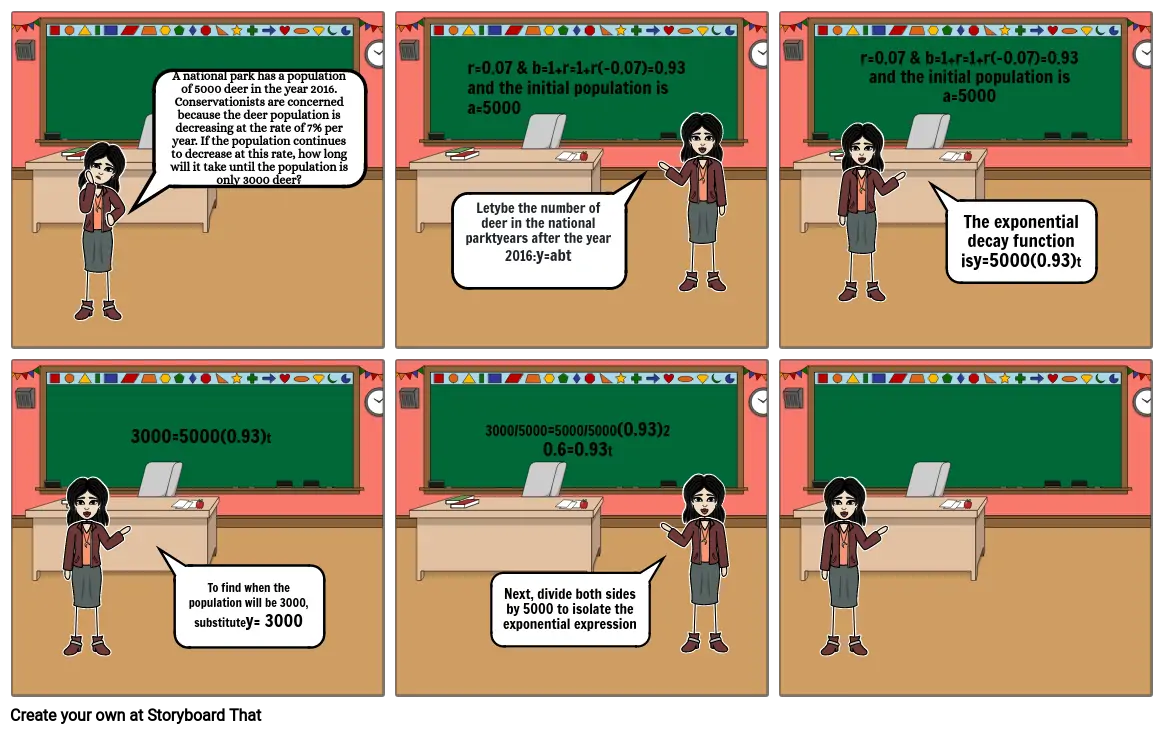Unknown Story

Storyboard Text
-
- A national park has a population of 5000 deer in the year 2016. Conservationists are concerned because the deer population is decreasing at the rate of 7% per year. If the population continues to decrease at this rate, how long will it take until the population is only 3000 deer?
- Let y be the number of deer in the national park t years after the year 2016: y=abt
- r=0.07 & b=1+r=1+r(-0.07)=0.93 and the initial population is a=5000
-
- r=0.07 & b=1+r=1+r(-0.07)=0.93 and the initial population is a=5000
- The exponential decay function is y=5000(0.93)t
- 3000=5000(0.93)t
- To find when the population will be 3000, substitute y = 3000
- 3000/5000=5000/5000(0.93)20.6=0.93t
- Next, divide both sides by 5000 to isolate the exponential expression
- Rewrite the equation in logarithmic form; then use the change of base formula to evaluate.
- t=log0.93(0.6)
Over 30 Million Storyboards Created
No Downloads, No Credit Card, and No Login Needed to Try!
